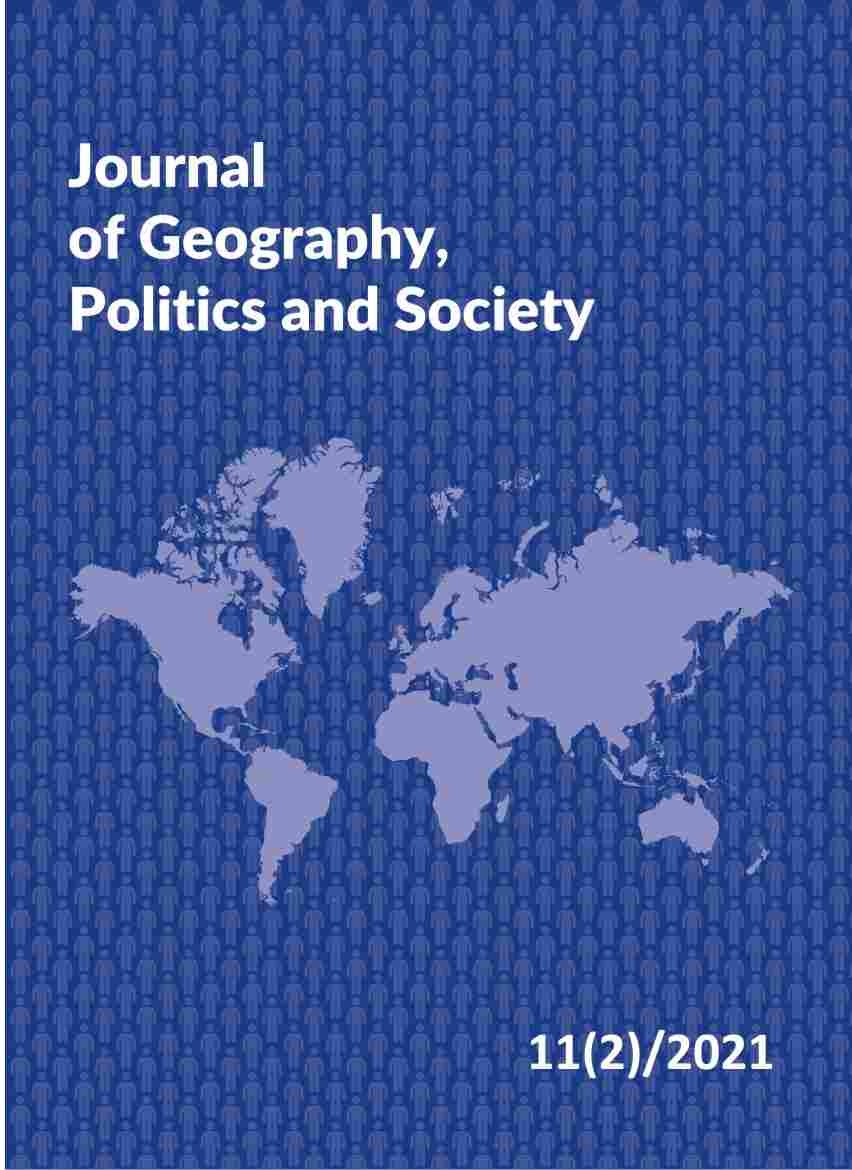Analysis of the key elements of the mechanism of formation of the system of intra-cluster interaction
DOI:
https://doi.org/10.26881/jpgs.2021.2.05Keywords:
clusters, system-forming links, structural components of system-forming links of clusters, principles of state regulationAbstract
The article considers the key elements that influence the mechanism of formation of the system of intra-cluster interaction. The article analyzes the competitiveness of the national economy as one of the system-forming factors, the mechanisms of self-organization of cluster formations, the properties of integration and cooperation of the participants of cluster formations, and it analyzes the structure of cluster system connections and develops the principles of state policy to promote the development of cluster formations.
Downloads
References
Ashby W.R., 1956, Introduction to Cybernetics, Chapman & Hall LTD, London. Blaug M., 1992, The methodology of economics: Or, how economists explain, Cambridge University Press, Cambridge.
Bocheński J.M., 2012, The methods of contemporary thought, D. Reidel Publishing Company, Dordrecht. Brodzicki T., Kuczewska J. (eds.), 2012, Klastry i polityka klastrowa w Polsce: konkurencyjność przedsiębiorstw, sektorów i regionów (Eng. Clusters and cluster policy in Poland: competitiveness of enterprises, sectors and regions), Wydawnictwo Uniwersytetu Gdańskiego, Gdańsk.
Dyrdonova A.N., 2015, Methodological basis for the formation of the cluster model to the regional economic development, International Journal of Econometrics and Financial Management, 3(1), 7–11. doi: 10.12691/ijefm-3-1-2.
Enright M.J., 1992, Why clusters are the way to win the game?, World Link, 5, 24–25.
Hunter D., 1998, No wilderness of single instances: Inductive sinference in law, Journal of Legal Education, 48(3), 365–401.
Krugman P., 1999, The role of geography in development, International Regional Science Review, 22(2), 142–161. doi:10.1177/016001799761012307.
Mâmlin A.P., 2013, Faktor prostranstva w èkonomikie: istoriografičeskij analiz (Eng. The space factor in economy: a historiographic analysis), Problemy Sovremennoj Èkonomiki, 2(46), 310–315.
Martin R., Sunley P., 2003, Deconstructing clusters: chaotic concept or policy panacea?, Journal of Economic Geography, 1(3), 5–35.
Micek G., 2017, Bliskość geograficzna przedsiębiorstw zaawansowanego przemysłu i usług a przepływy wiedzy (Eng. Geographical proximity of advanced manufacturing and service companies versus knowledge flows), Instytut Geografii i Gospodarki Przestrzennej Uniwersytet Jagielloński w Krakowie, Kraków.
National Strategy for Sustainable Socio-Economic Development of the Republic of Belarus for the period up to 2030 (Presidium of the Council of Ministers of the Republic of Belarus of May 2, 2017) № 10), 2017, Ministry of Economy of the Republic of Belarus, http://www.economy.gov.by/ uploads/files/NSUR2030/Natsionalnaja-strategija-ustojchivogo-sotsialno-ekonomicheskogo-razvitija-Respubliki-Belarus-na-period-do-2030-goda.pdf (accessed 04 April 2021).
Nowakowska A., 2011, Regionalny wymiar procesów innowacji (Eng. Regional dimension of innovation processes), Wydawnictwo Uniwersytetu Łódzkiego, Łódź.
Porter M.E., 2005, Konkurenciâ (Eng. Competition), Izdatel’skij dom „Vil’âms”, Moskva. Postanovlenie Sovieta Ministrov Respubliki Belarus’ ot 27 dekabrâ 2019 g. № 921 «О zadačah social’no-èkonomičeskogo razvitâ Respubliki Belarus’ na 2020 god» (Eng. Resolution of the Council of Ministers of the Republic of Belarus of 27 December 2019 no. 921 “ On tasks of socioeconomic development of the Republic of Belarus for 2020”), 2019, Nacional’nyj pravovoj Internet-portal Respubliki Belarus’, https://pravo.by/upload/docs/op/ C21900921_1578085200.pdf (accessed 05 April 2021).
Resolution of the Council of Ministers of the Republic of Belarus of March 23, 2016 № 232 «The State Program «Belarus Hospitable» for 2016-2020, 2017, Nacional’nyj pravovoj Internet-portal Respubliki Belarus’, https://pravo.by/document/?guid=3961&p0=C21600232 (accessed 05 April 2021).
Socialno-èkonomičeskoe sostoânie regionov i perspektivy ih razvitiâ (Eng. The socio-economic status of regions and prospects of their development), 2020, Minskij gorodskoj ispolitel’nyj komitet, https://minsk.gov.by/ru/actual/ view/209/2020/inf_material_2020_03.shtml (accessed 05 April 2021).
The Global Competitiveness Report, 2019, World Economic Forum, http://www3.weforum.org/docs/WEF_TheGlobalCompetitivenessReport2019.pdf (accessed 03 April 2021).
Ukaz Prezidenta Respubliki Belarus’ ot 15.12.2016 g. «Ob utverždenii programmy social’no-èkonomičeskogo razvitâ Respubliki Belarus’ na 2016–2020 gg.» (Eng. The Decree of the President of the Republic of Belarus of 15 December 2016 “On approving the program of socio-economic development of the Republic of Belarus for 2016-2020”), 2016, Nacional’nyj pravovoj Internet-portal Respubliki Belarus’, https://pravo.by/document/?guid=3871&p0 =P31600466 (accessed 05 April 2021).
Ukaz Prezidenta Respubliki Belarus’ ot oktâbrâ 2019 g. № 401 «О parametrah prognoza social’no-èkonomičeskogo razvitâ Respubliki Belarus’ na 2020 god» (Eng. The Decree of the President of the Republic of Belarus of 31 October 2019 No. 401 “On the parameters of the forecast of socio-economic development of the Republic of Belarus for 2020”), 2019, Prezident Respubliki Belarus’, http://president.gov. by/uploads/documents/2019/401uk.pdf (accessed 04 April 2021).
Wojnicka-Sycz E., Sycz P., 2018, Smart Specializations as Innovative Ecosystems. 5th International Multidisciplinary Scientific Conference on Social Sciences and Arts, SGEM 2018, [in:] 5th International Multidisciplinary Scientific Conference on Social Sciences and Arts SGEM 2018, SGEM Scientific eLibrary, book number 5.2., 479–486. doi: 10.5593/ sgemsocial2018/5.2/s20.060.

 Academic Scientific Journals
Academic Scientific Journals




